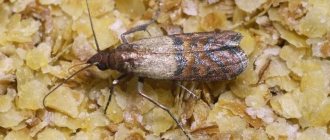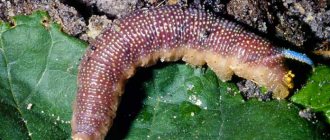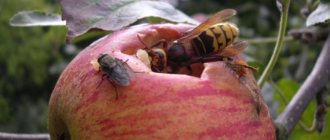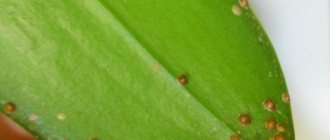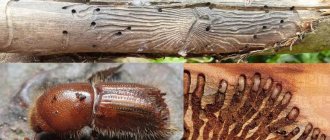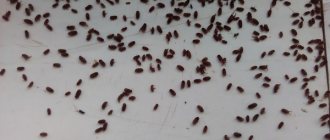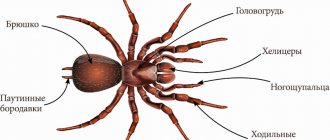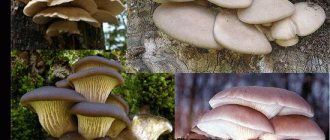AVENE Mattifying fluid 50 ml
1225 ₽ More details
Avene Sunscreen spray, SPF 30, 150 ml
1646 ₽ More details
Avene lotions
Butterflies are probably the most defenseless creatures of nature. They live short lives and serve as food for birds, frogs, lizards, hedgehogs, mice, rats, spiders, mantises and other predators. Almost 80% of butterflies are eaten in the caterpillar stage of development. Nature took care of some types of winged insects by endowing them with poison. Poisonous butterflies live everywhere, but there are especially many of them in southern countries - Africa, Australia, and Latin America.
There are many types of poisonous butterflies
How butterflies protect themselves
Some Lepidoptera acquired the color of their wings, allowing them to blend in with their environment: brown - the color of tree trunks, while blue ones are inconspicuous in flight, against the sky. There are also white representatives that blend in with the flowers. Brightly colored butterflies tend to have an unpleasant taste, and birds will spit them out.
Since butterflies most often die in the caterpillar state, since caterpillars are slow and clumsy, some individuals have villi on their bodies that cause intestinal irritation. Birds avoid unpleasant fuzzy larvae. The swallowtail caterpillar secretes a substance that repels birds with its smell.
It is noteworthy that blueberry butterflies are protected by ants. Little workers find bluebird larvae and bring them to the anthill. The larvae develop and turn into caterpillars. The caterpillars feed on ant larvae, and the ants feed on the substance secreted by the blueberry caterpillar. Thus, the caterpillars find themselves protected in the anthill. This is where they feed and winter. Well, the most aggressive type of defense is toxicity.
Blueberries are very beautiful
Other interesting facts
Some butterfly species use ants as governesses for their caterpillars. The latter attract ants with their smell, and they do not allow them to crawl far from the nest, and also protect them from various parasites.
The largest butterfly has a wingspan of 30 centimeters, but the smallest one grows to only 2; this little one is a blueberry.
Their wings are transparent and often contain ultraviolet colors. Some individuals are able to see it, unlike humans.
Now you know a little more about these beautiful insects. Repost to share this article with your friends!
Which butterflies are the most dangerous?
There are poisonous lepidoptera in Europe. People gave them truly royal names: monarch and their closest relative, viceroy. The only difference between them is that one of them has a black stripe on its wings, while the other does not have this stripe.
The monarch acquires its poisonousness while it is in the state of a caterpillar, which feeds on poisonous cottonweed. The Viceroy produces the poison himself. These butterflies are especially dangerous to birds.
What other poisonous butterflies live on earth are indicated in the table.
| Name | Habitat area | Color | Why is it harmful and dangerous? |
| Papilio Antimachus or Antimachus swallowtail. | Uganda | The butterfly is large, its wingspan reaches up to 20 cm. The swallowtail has long brown-orange wings with black spots. Paws are well developed. | She actually has no enemies, because all living beings tend to stay away from her. In a state of stress or fear, a sailboat releases an unpleasant-smelling, dangerous substance into the atmosphere |
| Green Emperor – Charaxes candiope | Its yellow-brown wings have green streaks. | The aggressiveness of this insect is reflected in the Guinness Book of Records as the most aggressive and fearless butterfly. She herself attacks her enemies and drops poisonous “bombs” of toxic substances on them. | |
| Urania | Tropics | Metallic shine of wings | Urania lays larvae on euphorbia plants containing poisonous juices. The larvae feed on this plant and get used to it, and they themselves accumulate poison in their bodies. Then this poison becomes a means of protection against birds, animals and predatory insects. |
| Heliconids | They received their sunny name for their red and yellow color. | Heliconids also pose a danger to humans. These lepidopterans produce poisonous cyanide from the food they eat. |
Sailboat antimah
Antimachus is the largest butterfly on the African continent. Its wingspan is 18-23 centimeters. It is painted in an ocher color, against which there is a pattern of brown and black lines and spots. The front wings are oblong and strongly elongated upward.
The Antimach swallowtail has no natural enemies, because it is one of the most poisonous butterflies in the world. It lives in the tropical rainforests of equatorial Africa - from Liberia and the Republic of Cote d'Ivoire to Uganda and the Democratic Republic of the Congo.
Which butterflies are dangerous at the caterpillar stage
The golden silkworm lives on the territory of Russia. The white butterfly itself is harmless, but the poison that causes allergies in humans is contained in the caterpillar. The golden silkworm or moth is also found in Europe and North America.
Read on topic:
Features of the life activity of ladybugs
14.11.2020
Description of chironomids and their possible danger to humans
14.11.2020
What do cutworms look like and what harm do they cause?
14.11.2020
What do goliath beetles look like and can they be bred at home?
14.11.2020
Ursa Kaya is a dangerous species of butterfly
The bear Kaya is another representative of poisonous Lepidoptera. Lives in Russia, Europe and Asia. The front wings are brown and white, the hind wings are orange with blue round spots. It is poisonous at all stages of development, starting from the larva.
The Kotzebue butterfly, or its second name kochubey, is blue-black with crimson speckles. It also poses a risk to birds and small animals due to the accumulation of toxins during its caterpillar state. Lives in the Philippine Islands and Malaysia. The local population calls this insect the purple rose.
For the most part, the poison of butterflies is dangerous for birds, small animals and insects that dare to feast on the flying beauty or its caterpillar. But there are individuals that can incapacitate a person.
Cabbage white butterfly or cabbage butterfly: photo, how to recognize the pest and how to deal with it
The cabbage butterfly lives in the garden in many regions, with the exception of the northeastern and southeastern regions. Voracious caterpillars damage heads of cabbage, gnaw leaves, and destroy part of the crop. When cabbage whites invade, owners risk losing a large percentage of their grown cabbage, radishes, and turnips.
Experienced gardeners recommend fighting dangerous pests using different methods. Biological products and folk remedies help; toxic compounds are effective when caterpillars actively reproduce. Useful tips will be useful to all owners of summer cottages.
articles:
Cabbage whites are attracted to plants of the cruciferous family. Pests eat leaves of cabbage, radishes, turnips, radishes, field mustard, and horseradish. The larger the number of monoculture plantations that appeal to the cabbage plant, the higher the likelihood of the appearance of beautiful white butterflies and dangerous, voracious larvae.
Adults lay bright lemon-colored eggs on the underside of the leaves; the voracious caterpillars immediately feed on young greenery after hatching. The female's fertility is amazing - up to two hundred tiny eggs at a time.
How to recognize
Peculiarities:
- The wings of cabbage white butterflies are painted white; males have characteristic dark spots. The wingspan reaches 5–6 cm;
- active reproduction of insects and the appearance of voracious caterpillars are the reason for the hostile attitude of gardeners towards this type of butterfly. Cabbage whites are one of the most dangerous agricultural pests. It is not butterflies that spoil vegetable plantings, but caterpillars;
- One oviposition often contains up to two hundred eggs. The development cycle is short - under favorable conditions (humidity up to 60% and temperature below +26 degrees), pests turn from egg to larva in just a week;
- Newly hatched larvae are small, ocher-colored, and feed on young leaves but do not cause serious damage. Grown-up pests actively bite into the pulp, eat the entire juicy part, leaving only thin veins;
- At an early stage of development, the larvae live in groups and later become isolated. It is not difficult to recognize the caterpillars: a greenish body with longitudinal light stripes across the entire back, yellow spots are noticeable on the sides;
- After a month, the grown larvae pupate, and two weeks later they turn into butterflies.
Little brown bugs in the apartment: who are they and how to deal with them? Read useful information.
How to get rid of moths in an apartment and what does a voracious pest look like? Find out the answer from this article.
Harm
The voracious caterpillars gnaw away a significant part of the cabbage leaves if the insect is not stopped in time. The result of the larvae’s activity is clearly visible: only veins remain from the leaves.
Pests also provoke diseases of cabbage, radish, mustard, and other cruciferous plants. Particles of excrement left between the leaves penetrate inside, worsen the condition of the greenery, and attract harmful insects.
Effective methods of control
The main thing: check cabbage, radish, horseradish or mustard plantations more often. When the number of pests is small, it is easy to collect them by hand, and destroy the clearly visible lemon-colored oviposition. The inaction of the owners often leads to the active reproduction of pests and damage to the crop.
Helpful Tips:
- combine several types of site treatment: from manual collection of insects and preventive spraying to the use of insecticides and biological products;
- regularly check the condition of cabbage, mustard, radish, and other cruciferous plants: with early detection of pests, it is easier to destroy cabbage white caterpillars;
- follow the rules for placing plants that attract dangerous pests. Levkoy, radishes, turnips and radishes attract cabbage butterflies; from these plants the voracious caterpillars easily move onto the tight heads of cabbage;
- To spray cabbage beds, use folk remedies and insecticide solutions. It is important to remember that chemicals are allowed to be used only at the stage of leaf formation: with later spraying of toxic compounds, particles of the substance often remain inside the head of cabbage and cause harm to human health. Biological products are suitable for spraying throughout the entire growing season, until harvest.
Folk remedies and recipes
Experienced owners use not only biological products and toxic agents to destroy cabbage whites. Decoctions and infusions with natural ingredients show good results.
Rules of application:
- carry out processing in calm, dry weather;
- the optimal time for spraying cabbage is morning;
- maintain the concentration of the compositions for an active effect on adults and caterpillars;
- For maximum effect, repeat spraying of decoctions and infusions every 2 weeks.
Proven remedies against cabbage butterflies:
- pine concentrate. You will need 200 g of spruce or pine branches, pine needles, cones, plus 2 liters of hot water. Place natural raw materials in an enamel container, add liquid, and leave at room temperature for 7 days. Remove the needles, strain the product, and put in the refrigerator. Before spraying, prepare a weaker solution: for 1 part of pine concentrate – 10 parts of lukewarm water;
- herbal decoction You will need yarrow, wormwood and burdock leaves in equal quantities. Place the green mass in a bucket, pour in three times more boiling water, close the container with a lid, and leave for 2 days. Strain, spray on cabbage beds;
- soap-ash mixture. You will need 10 liters of hot boiled water, 500 g of sifted ash. Mix the components, let it sit, pour the clear liquid into another container, add a couple of tablespoons of liquid soap, mix, use immediately;
- valerian against cabbage whites. The product with a characteristic odor has a negative effect on larvae and adult insects. For 3 liters of warm water you will need a bottle of valerian. Treat the beds with cabbage with the composition immediately after preparing the solution;
- sugar syrup with filling. To attract pests and catch individuals coveting a treat, experienced owners recommend boiling thick sugar syrup and adding a little yeast (approximately 1/5 of the total volume of the bait). Place the mixture in saucers and place them between the rows. You'll have to check how many cabbage butterflies have gathered next to the sweet bait. You will have to check the traps often: in addition to the cabbage whites, other insects flock to eat, including garden pests.
Learn about the types of insects in your apartment, how to recognize them and how to deal with them.
How to remove Prussians from living quarters and prevent their reappearance is written on this page.
Go to https://parazitam-stop.com/nasekomye/tarakany/nashatyrnyj-spirt.html and read about the rules and methods of using ammonia against cockroaches.
Drugs
For small cabbage plantings, it is advisable to use bacterial compounds with minimal impact on leaves and heads. Biological products are allowed to be used to destroy and repel cabbage butterflies throughout the growing season. Stop processing before harvesting.
Effective means:
- Fitoverm.
- Bitoxibacillin.
- Lepidocide.
Insecticides with a toxic base are suitable for treating beds with active reproduction of cabbage whites and a large garden area. Chemicals can only be used during leaf formation: spraying insecticides at a later stage often provokes the accumulation of toxic substances in plant parts.
Spraying of plants is carried out in the morning, in calm weather, in the absence of precipitation. Be sure to treat the lower part of the leaves, where pests often hide and where oviposition is located.
Effective drugs:
- Kinmiks.
- Karbofos.
- Actellik.
- Karate.
Important! Treatment of cabbage plantations with toxic agents is carried out in protective clothing, using a respirator, plastic glasses, and medical gloves. When exhaling insecticide vapors, dizziness, nausea, vomiting, and allergic reactions appear. In case of severe side effects, you should consult a doctor as soon as possible.
It is easier to prevent the invasion of voracious cabbage white caterpillars than to spend a lot of time destroying dangerous pests. To protect the garden, owners should think about some things in advance, for example, find out the rules for the proximity of certain crops.
Recommendations from experienced gardeners will help preserve the harvest. If the rules are strictly followed, the risk of butterflies settling on the site is reduced. It is important for owners to take an integrated approach to protecting their beds, otherwise cabbage will win.
How to protect your garden from cabbage whites? Ten proven methods:
- At the beginning of April, clean the trunks of fruit trees and be sure to whiten the perennials.
- Treating wooden structures with a strong stream of water will help get rid of the pupae.
- Weed control is a condition for protecting the garden. Many cruciferous weeds attract cabbage butterflies. There should be no field grass, rapeseed, or shepherd's purse in the garden.
- Turnips, gilly leaves, radishes and radishes should not be planted next to cabbage beds: these crops attract cabbage whites. Caterpillars quickly move to cabbage plantations in search of juicy, fleshy leaves.
- An excellent option for repelling pests is to plant plants with a bright smell next to cabbage. The owners confirm the good effect of planting marigolds, lemon balm, and valerian in the rows.
- A simple technique will reduce the risk of oviposition on the lower part of the leaves. At the end of May, you will have to cover the cabbage beds with a mosquito net or agricultural canvas: butterflies will not be able to land on young plants.
- Carrots, dill, and parsley attract natural enemies of cabbage whites. Alternating beds of cabbage with spicy herbs or carrots will prevent the active reproduction of harmful butterflies and caterpillars.
- You should not arrange monoplantations of cabbage: with this approach it is difficult to scare away harmful insects that eat the succulent leaves. Mixed plantings are easier to care for and the risk of destroying part of the crop is significantly reduced.
- Remember about the dangers of cabbage whites, regularly check the underside of the leaves. The bright lemon-colored egg laying is easy to spot. It is necessary to mechanically destroy the tiny eggs before the caterpillars hatch from them.
- Use effective biological products throughout the growing season. Gardeners positively evaluate the effect of the compositions Fitoverm, Bitoxibacillin, Lepidocid. The compositions are non-toxic and have a detrimental effect on voracious larvae.
The cabbage butterfly and its larvae must not be allowed to rule the garden. When planting cabbage, it is important to use agricultural techniques that reduce the risk of attack by dangerous pests.
Beautiful white butterflies over the garden are a danger signal: you will have to check whether oviposition has appeared on the underside of the greenery.
Traditional methods and effective insecticides will help in identifying caterpillars.
Is there no escape from butterflies in your garden that constantly damage your cabbage crop? The following video will show you a simple way to combat cabbage whites:
Attention! Only today!
Source: https://parazitam-stop.com/sad/rastenija/kapustnitsa.html
How can you get poisoned?
Of course, a person does not eat butterflies, and he cannot eat a poisonous individual (like mushrooms) by mistake. However, poisonous butterflies can cause harm to humans. Some individuals are allergenic and, in contact with the skin, they can provoke an allergic reaction of varying severity.
Lonomia caterpillars are very poisonous
People who often vacation in exotic countries or on islands simply need to know the danger that butterflies that are poisonous to humans pose. You should not try to catch them, you should not contact them. For example, the Lonomia butterfly lives in humid forests, which is extremely dangerous as a dark-colored caterpillar with spikes.
It contains toxins that block blood clotting. Probably everyone knows how dangerous such a disease is. Bleeding occurs that cannot be stopped, and internal bleeding poses a greater danger than open bleeding. Brain hemorrhage may occur.
Lonomy caterpillars hide in the foliage of trees, and inquisitive tourists and local farmers often become their victims. A person who has been poisoned needs medical attention. Otherwise, death is possible.
The hairy caterpillar is a fluffy and cute creature that you just want to touch. She lives in the northern USA. However, this cute creature is insidious: under the soft, delicate fluff are hidden thorns, which, when broken, inject poison under the skin. The person experiences all the signs of acute poisoning. However, these signs go away on their own after 1-5 days, depending on the amount of poison received.
From this video you will learn about the most dangerous insects:
What are the 2 most dangerous butterflies that live in Europe?
The most dangerous butterflies for humans that live on the European continent include the goldentail and the common bear. The goldtail has white translucent wings and is unremarkable in appearance. However, both its caterpillar and butterfly have hairs, upon contact with which a person can get an allergic reaction.
The butterfly lives everywhere, right up to northern Finland. There are especially many of them on the Mediterranean coast, which is rich in forests and parks. Tactile contact with lacewings leads to an allergic reaction.
You cannot rub your eyes with your hands at this moment, because if a hair remaining on your fingers gets into the eye, conjunctivitis will begin, and you will no longer be able to do without the help of a doctor.
The common bear can be found in Russia, the Caucasus and the Urals. She has an interesting color of her wings: the front ones are white with brown spots, the back ones are orange with black spots. The bear's body is shaggy, as if the beauty was wearing a fur vest. And this “vest” causes trouble for people and animals who dare to get closer to the beauty. The corpuscle villi cause an allergic reaction. And if the lint gets into the eye, then conjunctivitis occurs.
In Russia, one of the most dangerous is the common bear.
Goldentail
The poisonous butterfly from the family of moths is also called the golden moth and the golden silkworm. In Europe, it is distributed from the shores of the Mediterranean to southern Sweden and Finland, and is found in eastern Russia and North America.
This is a small insect with white furry wings, the span of which reaches only 3-4 centimeters. The butterfly lives in mixed forests, cool orchards and parks, causing significant damage to trees.
The lacewing is poisonous at the caterpillar stage. You can recognize it during this period by its brown color with yellow-white longitudinal stripes and tufts of long brown hair. After touching the caterpillar, it becomes harder to breathe, and the skin develops rashes and scars. Symptoms can be managed with a calcium chloride compress and antihistamines.
What is first aid?
After contact with poisonous butterflies, a person develops redness on the skin; the poison can cause itching and burning. In case of severe poisoning, or severe sensitivity of a person to this allergen, the temperature may rise, nausea, and muscle soreness may appear.
If a painful condition occurs as a result of contact with one of the poisonous beauties, you must:
- apply ice to the point of contact, which will slow down the blood flow and prevent the spread of toxins throughout the body;
- apply a constricting bandage that will limit the spread of poison through the bloodstream;
- treat the open wound with a bactericidal agent;
- Give the patient an antihistamine.
A person suffering from allergic reactions should always have histamines with him when going on vacation anywhere.

